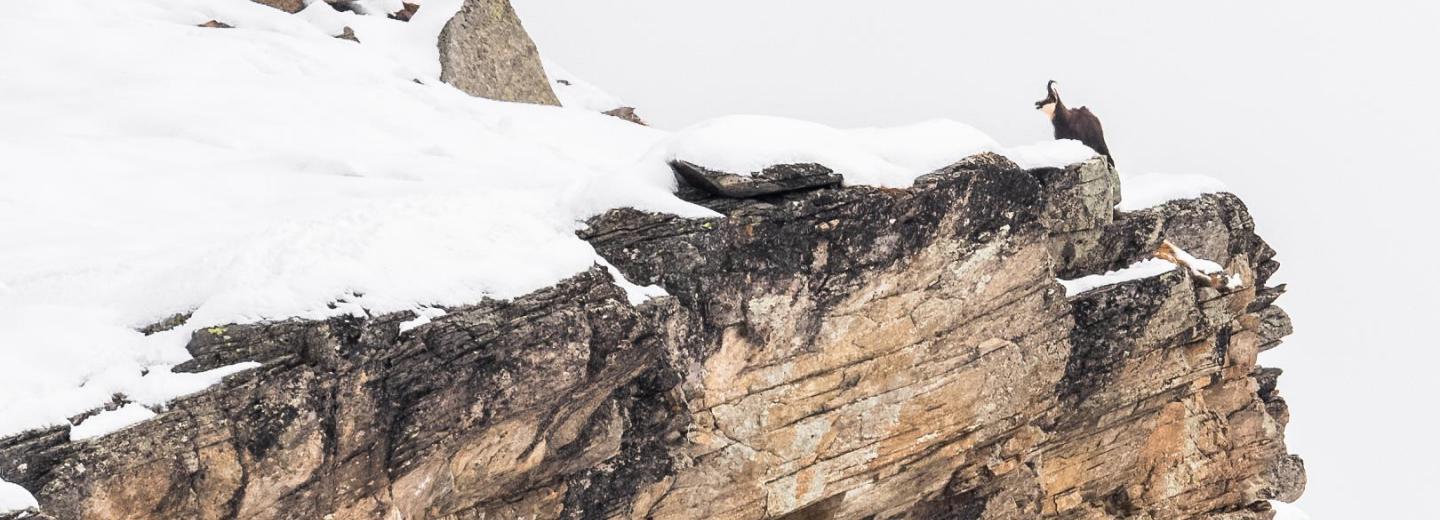Typical inhabitant of medium and high altitude mountains, the chamois lives in different environments, all characterized by steepness of the slopes and presence of rocks.
It is a medium-sized animal, compact in build, and it's from 100 to 130 cm in length. In autumn its weight is between 30 and 40 kg for males and from 25 to 30 kg for females. It is characterized by curved permanent horns, present in both sexes. Its hoof has a soft sole, which helps it to cling to rocks, and has a hard sharp edge, which allows it to use even the smallest footholds, and a membrane that spreads between its claws, providing a larger surface area on the snow. Its diet in summer consists almost exclusively of fresh grass but it also eats leaves, shrubs, lichens and moss over the winter period.
The chamois is the most numerous and commonly seen hoofed animal in the Park, and is uniformly spread out in both the Val d'Aosta and Piedmont valleys. Higher densities are found in the ravines of Campiglia, Noaschetta-Ciamoseretto, Sort, Levionaz e in Valnontey. The chamois, as well as the ibex, is monitored and studied with particular attention by the Park's researchers. A long-term study project on the eco-ethology of the species is being carried out in the upper Valle dell'Orco.
Photo: Marco Ferrando
